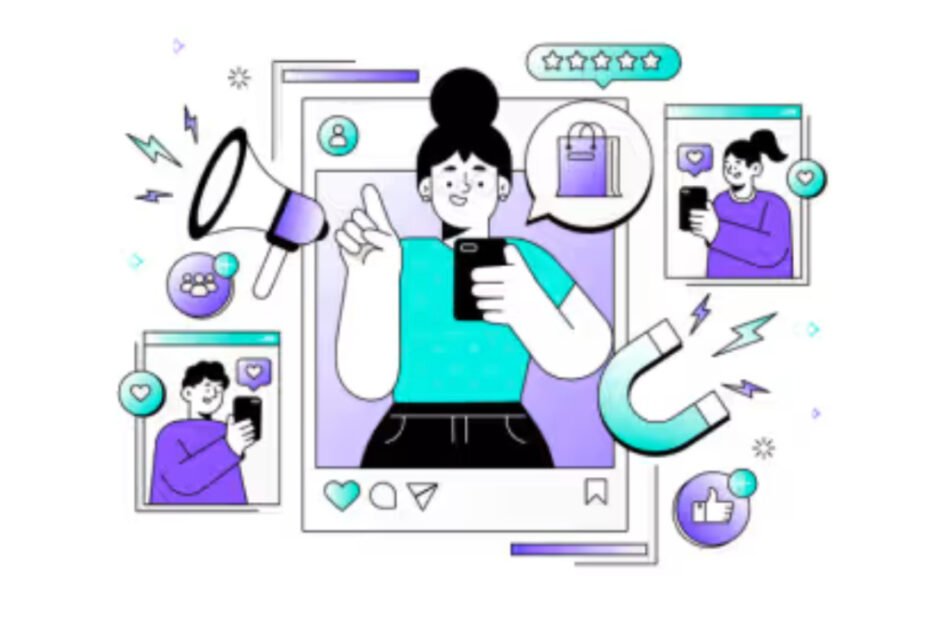You’ve probably heard of UGC while using social media but didn’t understand what the acronym means. UGC stands for User Generated Content and has become an excellent strategy for humanizing communication, increasing engagement, and improving a brand’s results.
Today, UGC is a key part of digital marketing strategies, especially among companies seeking visibility through spontaneous and relevant materials created by the community that consumes their products or services.
UGC has emerged as an effective alternative for producing more authentic content with greater potential for connecting with the public. With that in mind, we will explain what UGC is, the benefits of this strategy, and the best platforms for finding brands and creators. Check it out!
What is UGC (User Generated Content)?
UGC, or User Generated Content, is the name given to all types of content spontaneously produced by customers themselves about a brand, product, or service. This can include everything from comments, reviews, and experience reports to photos, videos, and posts on social media or forums.
Because it involves real people sharing their opinions and experiences, this type of content tends to convey more trust. This is the main difference of UGC, this perception of authenticity, which can end up directly influencing purchasing decisions and building the company’s reputation.
Another positive point is that it provides valuable information about the consumer’s relationship with the brand, helping to identify strengths and opportunities for improvement in the purchasing journey.
However, because it is spontaneous content, the brand cannot control the tone or message conveyed. Thus, UGC can involve risks, such as negative comments or unsatisfactory experiences that end up becoming public.

What is a UGC Platform?
Now that you know what UGC is, it’s worth learning about the tools that facilitate the connection between brands and content creators.
These platforms were developed precisely to bring companies closer to talented individuals capable of producing authentic material that generates real identification with the public, such as videos, images, and testimonials.
In other words, they serve as a meeting point between brands and creators who transform real experiences into captivating content.
With a good platform, your brand can:
- Find creators aligned with your business identity;
- Centralize the entire creation process in one place;
- Produce content at scale, with agility and at a lower cost.
By choosing the right platform, it is possible to develop materials that are much more engaging and reliable than traditional advertising campaigns. The result? Authentic communication that really speaks to your audience.
Difference between Creator and UGC Creator
The main difference lies in their focus: traditional influencers and creators add value by bridging the gap between brands and their own audiences, often reaching people who would be unlikely to be impacted by institutional actions.
UGC creators, on the other hand, stand out for their ability to produce visually appealing material with authentic language, regardless of how many followers they have.
In other words, while one relies on influence and an audience built up over time, the other has the unique ability to create quality content that can be leveraged by the brand on its channels.
Benefits of creating UGC
UGC provides a type of connection with the public that is difficult to achieve with materials produced by the brands themselves. Below, we highlight four reasons why UGC has become so valuable:
1. Genuineness
Unlike scripted ads or campaigns with more advertising-oriented language, videos and posts made by UGC creators are usually spontaneous and close to everyday life.
This arouses more empathy from the audience, who perceive these recommendations as real, similar to advice given by friends or acquaintances. It is precisely this naturalness that generates more trust and brings the audience closer to the brand.
2. Lower production costs
Compared to other marketing strategies, such as traditional or large-scale influencer campaigns, user-generated content generally requires less investment.
This is because UGC creators, in many cases, do not focus primarily on the number of followers, but rather on the quality and delivery of the material. This way, brands pay only for content production, not for exposure to large audiences.
3. More impact on purchasing decisions
UGC acts as a modern form of social proof. When consumers see real people using a product and sharing their experiences, they tend to feel more secure and confident about buying it.
Since this type of content does not have the classic look of an advertisement, it also tends to generate more engagement and conversions organically.
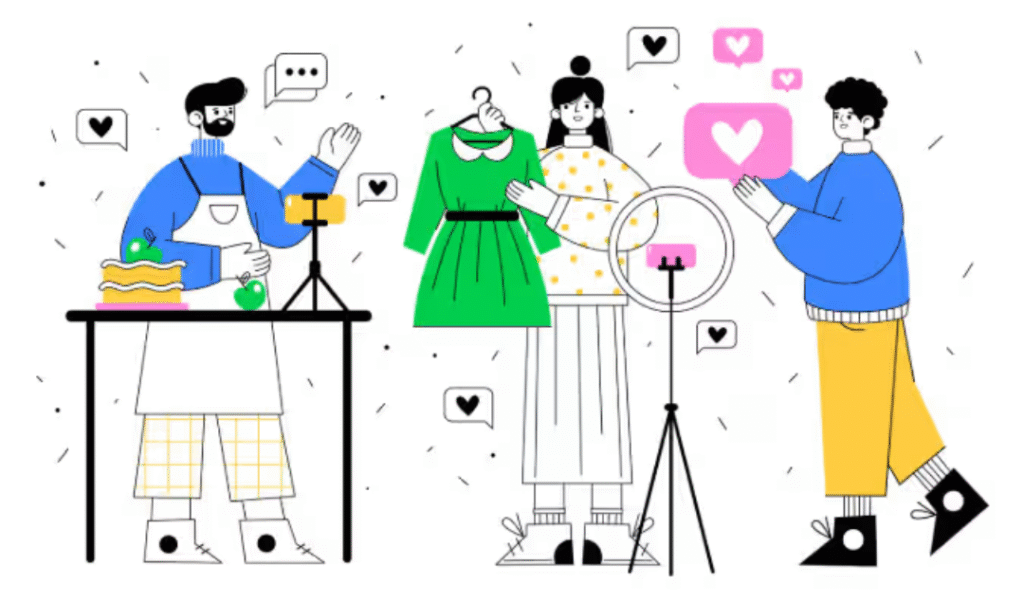
4. Agility in production
Creating content within the company itself can require time, planning, and a dedicated team. When working with UGC creators, brands can access ready-made materials much more quickly.
This is especially advantageous for small businesses or marketing teams with limited resources. In addition, it is possible to hire several creators at the same time, which ensures a constant flow of varied content to feed social media, advertisements, and other campaigns.
Best UGC platforms
Choosing a good UGC platform can make all the difference in the performance of your content strategy. With that in mind, we have compiled a list of the main UGC-focused websites to help you find brands and influencers for your brand’s campaigns.
1. Bloomer
Bloomer is one of the first Brazilian platforms dedicated exclusively to user-generated content (UGC), promoting connections between brands from different segments and creators willing to produce videos such as reviews, unboxings, and real-life stories.
To get started, creators need to set up their profile with basic information, social media links, and content samples. Once this is done, they can apply for available campaigns according to their style and profile.
Companies, in turn, structure the campaign briefing, choose the participants, and, when necessary, send the products. The deadline for content delivery is usually up to 48 hours, with the possibility of revision after submission.
All campaign and payment management will be centralized on the platform itself, and creators receive the full amount for their work directly via PayPal.
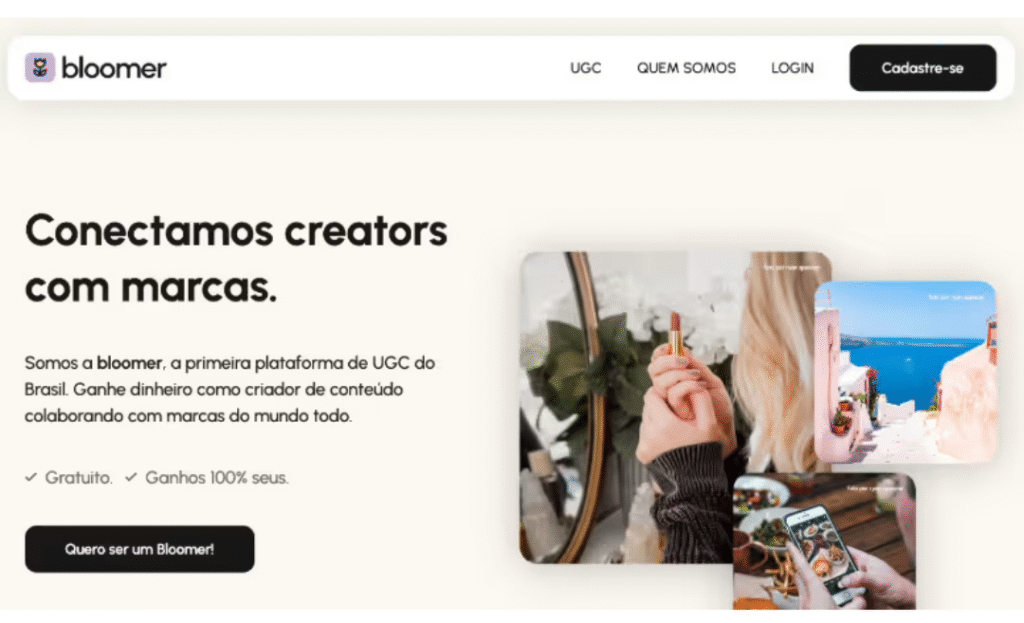
2. Trend
Another excellent platform option for user-generated content (UGC) is Trend. The platform acts as a bridge between brands and creators, providing a practical experience with full content licensing and uncomplicated navigation.
For creators, the sign-up process is simple, free, and does not require a minimum number of followers. They can select campaigns that match their profile and produce the material remotely, without the need for in-person recordings.
On the business side, there is easy access to creators who produce customized content on demand. The tool takes care of organizing the schedule, controlling deliveries, and providing legal assurance for the full use of the materials generated.
3. Influee
Influee is a UGC platform that stands out as a robust solution for brands that want to expand the production of real, relevant content that is in tune with the way their consumers communicate.
Operating globally, it connects more than 1,500 companies to a community of over 80,000 carefully selected creators, who produce everything from spontaneous videos to reviews and unboxings.
For content creators, all they need to do is set up their profile with samples of their work and information about their style. Then, they simply apply for available campaigns and follow the brand’s instructions. Responses usually arrive within two days.
Once approved, the creator sends the material and receives payment within 5 to 10 business days, without having to issue an invoice.
The platform also offers a protection system that ensures payment after delivery of the content as agreed. In some campaigns, in addition to remuneration, the creator also receives the product as part of the partnership.
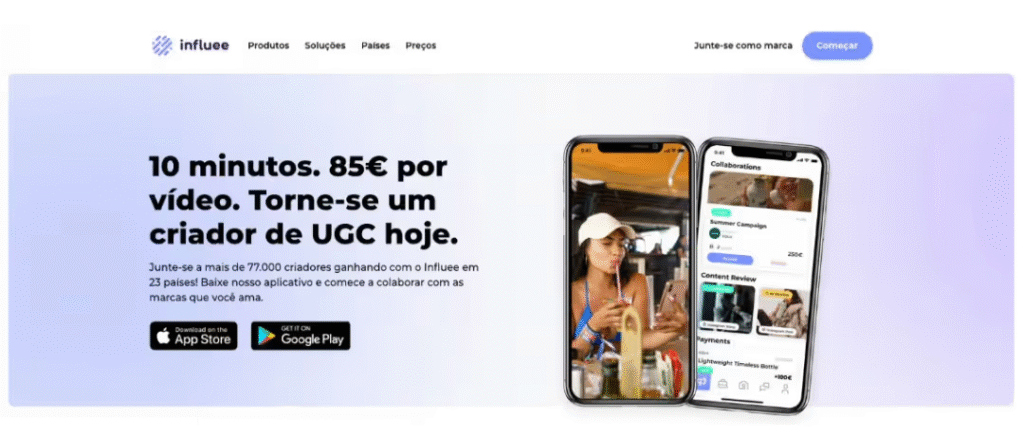
4. TINT
TINT is a specialized UGC solution, partnering with over 5,000 international brands to collect, organize, and promote user-generated content.
The platform facilitates the collection of social media posts through hashtags, mentions, or defined profiles, applying smart filters and automatic selection processes to ensure that only the most relevant content is used.
One of its key differentiators is copyright management, with tools that automate permission requests and maintain complete records to ensure correct use and compliance with legal standards.
In addition, TINT offers analytical dashboards that reveal which types of content perform best, who are the most influential creators, and which actions generate the most conversions, contributing to the continuous improvement of campaigns.
5. Insense
Insens goes beyond a simple UGC platform, offering cutting-edge technological solutions and operating on an international scale. Although headquartered in New York, the company has built a solid community with more than 20,000 creators and partners spread across several countries.
An important differentiator for Insens is its focus on offering qualified knowledge about the world of influencer marketing. The platform provides free materials such as e-books, guides, and educational content aimed at professionals and companies who want to better understand how to explore this segment.
Its ecosystem includes a modern and sophisticated marketplace, coupled with accurate tools for performance and results analysis, providing a complete experience for those who want to generate impact through content creators.
6. Infleux
Infleux is another UGC agency option geared toward the Brazilian audience. With origins in Brazil, it was one of the pioneers in adopting a model based on affiliated creators, prioritizing the delivery of real results for advertisers.
The proposal is to give creators the freedom to develop content and set their own publication pace, always with a focus on conversion. Brands can establish payments linked to specific actions, such as clicks, registrations, subscriptions, or purchases.
Headquartered in São Paulo, Infleux is thoroughly familiar with consumer behavior and regional trends. They have a local team and direct support in Portuguese, and communication with companies and creators is fluid and contextualized.
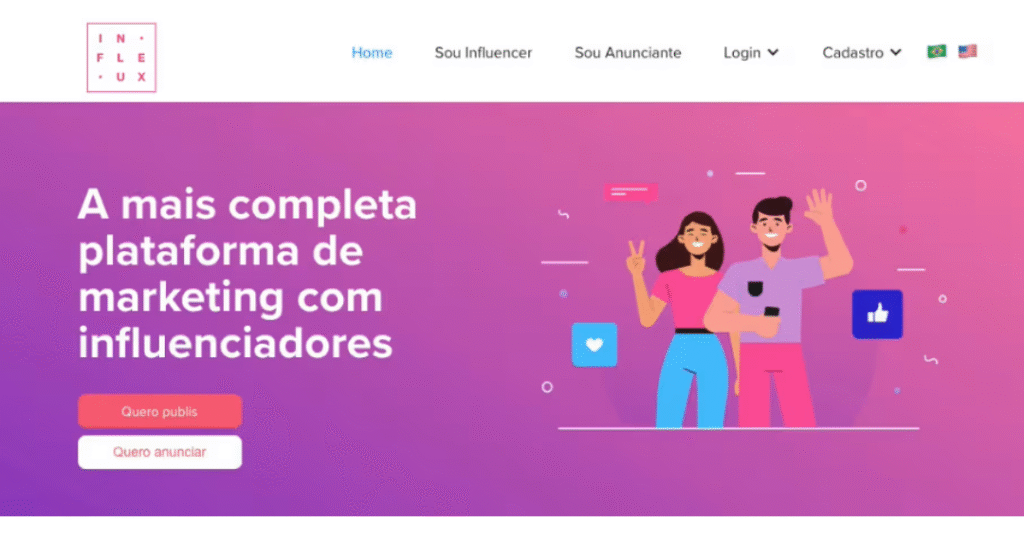
7. Grin
GRIN is a UGC platform aimed at brands seeking more authentic campaigns based on real relationships with creators. In addition, they offer a complete ecosystem for managing partnerships with influencers and content creators.
The system enables the identification of relevant profiles on TikTok, Instagram, and YouTube, with detailed segmentation features, search for similar profiles, and real-time monitoring of networks. In addition, it has an AI-based virtual assistant that optimizes the recruitment process.
Grin takes care of all stages of the campaign in a single environment: from the briefing and initial contact with influencers to sending promotional products, coordinating deadlines, releasing payments, and approving creative pieces.
8. Ampli
Ampli is another excellent Brazilian UGC (User Generated Content) platform. Focused on the Latin community, it already serves countries such as Mexico, Brazil, Spain, and the United States, and wants to expand to Colombia, Chile, and Argentina.
The platform has an extensive base of creators capable of developing original and impactful content. Ampli has high quality standards, delivering genuine content tailored to each brand’s audience.
The platform connects brands to thousands of influencers with varied and relevant profiles. In addition, it operates with short deadlines and guarantees delivery within seven days. Customer service is available full-time, with close follow-up with the client.
9. Controller
Controller is a UGC platform where users can apply for available campaigns and submit their materials without relying on agents or managers. Payments are even made directly on the platform.
The platform allows creators to submit their content and participate in campaigns independently, directly through the app. In addition, payments are processed and transferred to creators by the tool itself, without any red tape.
10. Billo.app
Another UGC platform we present is Billo.app. They connect video creators with brands, offering paid opportunities for authentic, performance-focused content based on real ad data. No number of followers or previous experience is required.
The focus is on simplicity of the process and the delivery of authentic, well-produced content at affordable prices. For brands, this platform is ideal for small and medium-sized businesses that want original and engaging videos without complications.
After completing registration on Billo.app, users have daily access to various briefings. Companies analyze profiles and select creators within a few days. Once chosen, creators receive the products for free and must submit the finished videos within five business days.
The delivered materials are evaluated by the contracting brand or are automatically approved after three business days without feedback. Payments are made every 15 days via PayPal, covering the agreed amount per video and possible additional bonuses based on performance.
How to become a UGC creator
But how do you get started as a UGC creator? We have put together some essential tips for anyone who wants to break into this market as a content creator.
1. Study and observation
Before producing, immerse yourself in the world of UGC. Watch different types of videos and observe what works well, such as the format, speaking style, editing, and elements that capture attention. This will help you understand what sets effective content apart from the rest.
It’s also important to research which brands you would like to represent. Choose niches that you identify with and focus on products that make sense to you. That way, when you create, your communication will be more natural and authentic.
2. Definition of channels and equipment
Choose the platforms that make the most sense for the type of content you want to create. TikTok, Instagram, and YouTube Shorts are great starting points for short, dynamic videos.
In the beginning, you can just use your cell phone, but to stand out, investing in quality will make a difference. Consider:
- Lighting: a basic ring light or natural light helps a lot.
- Audio: a microphone greatly improves speech clarity.
- Image: a smartphone camera is sufficient, as long as it is used properly.
- Setting and objects: choose a neutral, clean background and use elements that match your niche.
3. Video production and editing
Now it’s time to practice. Use products you already have and start recording. Try to replicate the format of the content you analyzed, but without losing your identity. The difference will be in your naturalness and ability to connect with your audience.
Take care when editing the video. Don’t forget the subtitles, as they help to retain attention and make the content more accessible. Creating a visual identity is also good practice: fonts, colors, and style that help viewers recognize that the video is yours, even without seeing your name.
4. Build a portfolio
Once your videos are ready, start organizing a selection that best represents your work. This will be your calling card for future opportunities.
You can post this content on your own social media accounts, tagging the brands involved as a way to position yourself. Another option is to store this material on a drive, online portfolio, or personal website.
5. Approach companies strategically
Even if you don’t have thousands of followers, having an active presence can help increase your visibility and credibility. So actively seek out partnerships. Some important steps:
- Find the right contact: marketing emails or social media accounts for brands are good options.
- Put together an introductory message: briefly talk about who you are, why you want to collaborate with that brand, and add a link to your portfolio.
- Send personalized proposals: show that you have studied the company and are aligned with its values.
- Track your progress: keep a spreadsheet with the contacts you’ve made, responses, and the status of each proposal.
6. Sign up for UGC platforms
If direct contacts are not generating results, consider signing up for platforms that connect creators with brands. We have compiled a list of platforms that allow you to showcase your portfolio, receive job invitations, and facilitate the start of your career in this market.
The top social networks for UGC Creators
UGC can be found on virtually all social networks, but some have become true hubs for this type of material:
With its visual focus and features such as stories, reels, and feed posts, Instagram is a powerful showcase for consumer-generated content.
The integrated shopping functionality makes it easy to discover products directly from these posts, making the experience more fluid for those interested in something they have seen on the network.
TikTok
Due to its dynamic format and viral potential, TikTok has established itself as one of the leading platforms for UGC.
Creative, spontaneous videos with authentic language have great potential for reach, even when produced by profiles with few followers, thanks to the highly responsive algorithm.
YouTube
Especially popular for longer videos, YouTube is widely used for reviews, tutorials, unboxings, and other ways of sharing real experiences with products and services.
It is an environment where user-generated content gains traction precisely because it conveys credibility and depth in its analysis.

